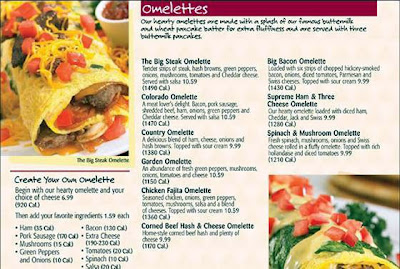
That's the title of a commentary in this week's
JAMA, written by Marion Nestle (
she blogged about it) and David Ludwig.
Was there some irony in that title?
Here's the
JAMA link, but it's only an abstract for non-subscribers:
Can the Food Industry Play a Constructive Role in the Obesity Epidemic?, JAMA, October 15, 2008
As a courtesy, Dr. Nestle uploaded a pdf of the whole article:
Can the Food Industry Play a Constructive Role in the Obesity Epidemic?
Irreconcilable ConflictLewis and Nestle explain the challenge for the food industry, the "irreconcilable conflict" as they put it. Food corporations wish to appear responsible when it comes to public health, but they're first-and-foremost beholden to stockholders, and must not only remain profitable but meet ever-elevating growth targets.
How do you sell more food when the US food industry already "provides about 3900 kcal per capita each day, roughly twice the population's energy needs?"
"Food companies have only 2 options: convince customers to eat more ... or increase profit margins especially by marketing reformulated or repackaged products."

The "eat more" option is played out in larger portions and advertisements that promote frequent snacking.
The "increase profit margins" option is achieved via heavy advertising of processed foods (soft drinks, chips, cookies, baked goods, fast food) which are made to appear as options for daily - not occasional - consumption.
"Advice to eat less often, eat foods in smaller portions, and avoid high-calorie foods of low-nutritional quality undermines the fundamental business model of many companies."
Should The Food Industry Be Regulated ... Or Left To Police Itself?Lewis and Nestle claim that regulation is needed in some industries (they didn't refer to Wall Street, maybe they could have), namely those industries that affect "health, safety, or the greater social good."
So, if we're regulating the automobile industry...
"Society does not expect car companies to police themselves, nor allow them to market unsafe cars. ... The government imposes regulations, mandates, taxes, and incentives to encourage production of safer and less polluting vehicles."
And the pharmeceutical industry, why not the fast food industry?
"If commercials for erectile dysfunction medication must mention rare complications like prolonged erection, it seems that commercials for fast food should be required to warn about the likely consequences of consuming partially hydrogenated fat and too much sugar."
The automobile analogy appears adeptly again in their conclusion:
"While visionary CEOs and enlightened food company cultures may exist, society cannot depend on them to address obesity voluntarily, any more than it can base national strategies to reduce highway fatalities and global warming solely on the goodwill of the automobile industry."
I thought the article showed great restraint. In my opinion, the food industry is insidious in its tactics to appear ethical while engaging in such practices as funding unscrupulous entities like the Center for Consumer Freedom (CCF) - an unabashed front group for the food industry that lobbies aggressively against public health campaigns and legislation. They boast, "[our] strategy is to shoot the messenger ... We've got to attack [activists'] credibility as spokespersons." The CCF did just that to Dr. Nestle
here.
My discovery that the egg industry's "cage-free," "free-range," "organic," "humanely-raised" hens aren't treated much differently than factory-farmed hens knocked the food industry's credibility down a few more notches for me. I'm probably too cynical now to think that McDonald's or Coca-Cola can lead the way to healthful eating.
Hmm ... this is good fodder for a poll question.
PS - All of those logos up there represent bona-fide
corporate sponsors of the American Dietetic Association (ADA). Some of their missions:
- "National Dairy Council is committed to providing scientifically sound nutrition information to physicians, dietitians, nurses, educators, consumers and the media concerned about fostering a healthier society."
- "General Mills is committed to nourishing lives through health and wellness."
- "Kellogg's is committed to helping consumers maintain a healthy diet and an active lifestyle."
I'd say the ADA is engaging in some good old fashioned conflict-of-interest.
________
 From the BBC this morning:
From the BBC this morning:













 Hint:
Hint: I wanted to use the topic of my
I wanted to use the topic of my  That's the title of a commentary in this week's JAMA, written by Marion Nestle (
That's the title of a commentary in this week's JAMA, written by Marion Nestle ( The "eat more" option is played out in larger portions and advertisements that promote frequent snacking.
The "eat more" option is played out in larger portions and advertisements that promote frequent snacking.



 This leftover one makes a nice seasonal paperweight.
This leftover one makes a nice seasonal paperweight.







